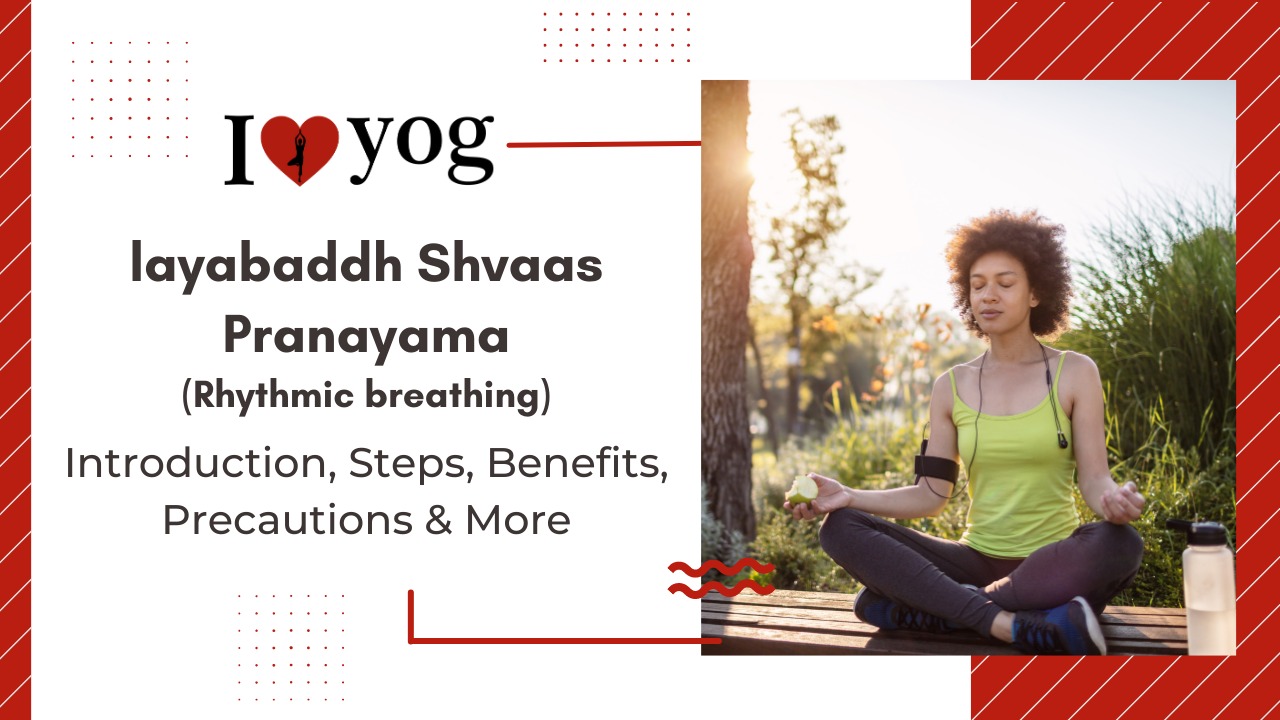As the name suggests, this pranayama exercise involves rhythmic breathing (taal yukt, which literally translates as rhythm). This means that in this exercise the flow of breath follows a steady, precise rhythm without pauses. With consistent exercise, the oxygen supply can be increased and the natural rhythm of our body can be restored. But it also has a great effect on a mental level, as it boosts self-confidence and optimism while giving us a wonderful feeling of pure calm.
Getting started
Especially as you begin to run, focus on a casual, comfortable jog and set realistic starting points and goals. Prior to increasing the intensity, pay attention to your respiratory rate and become comfortable to jogging, rest if needed. By using belly and rhythmic breathing, your breathing can become more effective during your run. Remember to consult your doctor before starting an exercise regimen, especially if you have a chronic disease.
Steps of rhythmic breathing?
- Let your throat relax and breathe normally.
- Inhale slowly and deeply
- Hold the breath in as long as you feel comfortable
- Exhale fully
- Hold your breath out this time
- Return to a natural, regular breath
Benefits:
- Breath is life, rhythmic breathing harmonizes your breath and with it your life.
- When breathing becomes rhythmic, it calms our nervous system, relieving tension and promoting feelings of well-being and relaxation.
- You get more oxygen, which means your body has more energy.
- Improves your focus and concentration.
- Lays a solid foundation to begin meditation practice by calming the mind.
Precautions
- This exercise can be performed by a person of any age, even very weak ones. Even very weak people can do this for 20 to 30 minutes a day.
- Do 15 to 20 minutes of practice every day.
- You can also practice this deep breathing whenever you have free time in the office, waiting for a bus, going to the office (make sure your stomach is not full, at least 3 hours should have passed since your last meal).
- Practice deep breathing as often as possible (depending on time) for 2 to 3 months.
- Your breath becomes deeper and the breathing rate subconsciously decreases without you realizing it.
- When you feel you are able to breathe more deeply, increase your breathing cycle times.
- Inhale for six seconds, hold your breath for three seconds, exhale for six seconds, and hold for three seconds before taking the next breath in the 6:3:6:3 ratio.
What are the ways to practice rhythmic breathing?
To practice rhythmic breathing, remember to use abdominal breathing and a 5-step pattern:
- 3 steps on inhalation and 2 steps on exhalation (i.e. on step: inhale left, right, left; exhale right, left, right; left inhale, right, left; exhale, right, left, right).
- This naturally shifts your breathing so that it doesn’t keep touching the same foot as you inhale, reducing pressure on the diaphragm and body during the run.
- When you hit a faster pace and need more oxygen to fuel your muscles, you can still maintain that balance by switching to a 3-step pattern: 2 steps on the inhale and 1 step on the exhale.
- The 5-step and 3-step patterns may be difficult to imagine, but once you start using the pattern you can almost feel when the breathing becomes more comfortable.
How Rhythmic breathing work on the body?
Another effective way to get more oxygen and also reduce the effects of running on your body is rhythmic breathing or creating a rhythm between breathing and running, also called gait. Rhythmic breathing is a winning technique for runners because:
When we breathe in, we actively use our breathing muscles and when we breathe out, we relax them. Filling the lungs takes more strength and time than exhaling, when the diaphragm simply relaxes to push the air out. Rhythmic breathing can make us aware that we need to breathe longer for the oxygen needed for high-intensity exercise like running. When we breathe in, we contract and stabilize our diaphragm and core muscles, making them more stable during the inhalation phase of breathing. When your foot hits the ground, the impact force is two to three times your body weight. This impact load is greatest when your foot touches the ground. When this impact occurs at the beginning of an exhalation, it hits us at the most unstable times for the pelvis and core. Rhythmic breathing can train us to better match the force of impact with our inhalation (more stability in our diaphragm and core muscles) and also train us to shift the pressure of right foot to left foot. And instead of breathing in and out repeatedly on the same foot, a 5-step running pattern can help distribute that impact to the feet and reduce stress on the body. This technique can allow you to maximize your performance and reduce injuries and even stitches.


